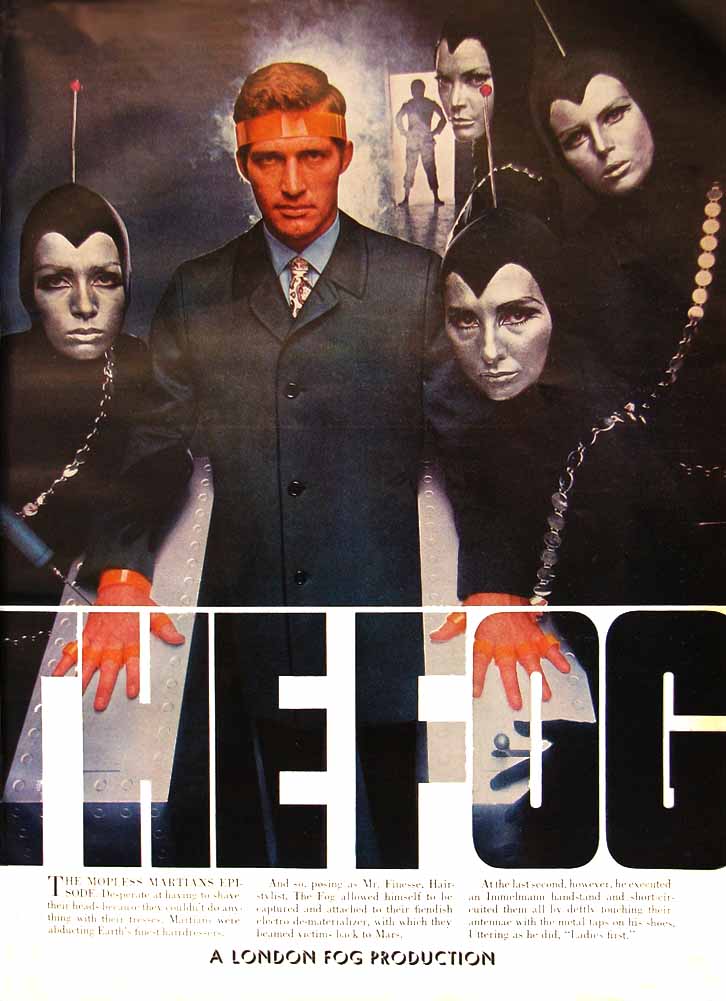 Colonials in South Africa experience a different type of rhythm and blues. 
South Pacific. South America. South of France. We don't care—we love books sets in exotic places wherever they might be. Tell It on the Drums takes readers to South Africa as five men attempt to escape with $250,000 in diamonds from a dusty mining town called Kimberley and reach Pretoria. The story is basically a western escape tale, set in the late 1800s, when places like the Orange Free State and Cape Colony still existed, and the law was something that could be outdistanced on the back of a good horse. Pursuit is inevitable, but paranoia too. And as you'd expect, the real problem is not the law but the fractious partnership between the quintet of fugitives, which includes fearsome U.S. Civil War rebel Adam, craven Boer mercenary Coenraad, and compulsive French thief Dénis.
The 24/7 throbbing of drums is intelligible to tribespeople, and relays news in rhythm about the robbery. The five fugitives are soon known throughout the land, as are their movements and deeds. They have an inkling reports of their heist have travelled by air, but still think they're escaping secretly. It's an illusion. Too bad none of them understand the drums, because they begin urging that the quintet be herded north for some mysterious purpose. Surprisingly, Krepps splits the group up at that point in the story. Coenraad and Dénis trek upcountry to trick tribesmen out of their riches. Adam and one other continue fleeing to Pretoria. The inside man-turned-unwilling accomplice bolts into the veldt but is taken on by a veteran hunter. All the while the drums say: north, send them north, and it's clear that a reckoning looms.
We'll stop there, but we want to note a great set piece—to steal a cinematic term—involving a mass charge by twenty enraged baboons. It's a centerpiece sequence, all teeth, fangs, gunsmoke, and blood, and it's well written. Krepps is a solid writer on all fronts. Tell It on the Drums moves quickly and there are no moments where the narrative falters or feels forced. All the usual warnings about mid-century literature set in Africa apply, but in this case Krepps gives South African tribespeople agency via his device of coded drum talk. Drums speak in most novels of this type, but this time they're in all places at all times, surrounding the white men, and seem to be the entity in control. It adds a nice layer of dread. Overall, an excellent book, with nice cover art by Robert Stanley.
 Toto we’re not in Africa anymore. 
We said we'd get back to Stuart Cloete’s 1943 jungle drama Congo Song, and here we are. The book has been reprinted often, including in the 1958 Monarch edition you see above, with Harry Schaare cover art. Its popularity certainly owed something to the fact that it was another book that nurtured popular Western stereotypes about life in Africa, including that it attracted decadent and damaged whites whose weaknesses were inevitably amplified by the deep, dark, primitive, savage, mysterious continent. You've read something like this once or twice, we bet, thanks to Hemingway and others, though Cloete, who was from South Africa, writes in an entirely different style than Papa:
This was the Congo song: the song of sluggish rivers, of the mountains, the forests; the song of the distant, throbbing drums, of the ripe fruits falling, of the mosquitoes humming in the scented dusk; the song of Entobo, of the gorilla, and the snake. The song no white man would ever sing. The wild dogs cry out in the night as they grow restless, longing for some solitary company. Oops—that last sentence is from the Toto song “Africa.” Don't know how that slipped in there. Anyway, Congo Song unfolds in the months before the start of World War II. Cloete’s characters are diverse, with his main creation being Olga le Blanc, the only woman living in an isolated outpost called Botanical Station with several men, including her husband, a researcher who spends a lot of time away. Olga is a vamp who must make other men fall in with love her, and her affections don't end at homo sapiens sapiens—she has a gorilla, unsubtly named Congo, that she nursed at her own breast when it was an infant. Cloete’s symbolism is pretty thick milk. Erudite conversation, circular philosophizing, seductions, and secrets abound at Botanical Station. One of the other main characters is an American named Henry Wilson who has been sent by handlers in Nairobi to keep an eye on the doings of a German spy named Fritz von Brandt. Olga, meanwhile, spies on von Brandt for the English—sometimes from his bed. Other characters have less purpose, and many eccentricities. One drinks too much. Another sleeps with teenaged Congolese girls under the guise of employing them as domestics. The researcher seems to love trees more than Olga. Nobody is particularly happy. Who is who? Who wants what? There's another spy, who we won't name, a machine-like man, asexual, immune even to Olga: Women were the weakness of so many. Money, luxury, power, all resolved themselves finally into women. That was where the money went. That was what the power was used to obtain. How lucky he was to have been born without sexual feelings. All the duplicity in Congo Song derives from the looming war in Europe, but there's also another driver: “Under all this,” Olga observes, “is the never-ending fight for the riches of Africa.”
Despite all the dinners, safaris, subterfuges, and soliloquies—or maybe because of the soliloquies—the book doesn't gather momentum until about page two-fifty, after a fatal accident. Then things move fast enough to cause whiplash. Death comes by various methods, none of them banal. And of course there's still that gorilla. He lives in the house with the le Blancs, but Olga lets him loose regularly. Surely that'll end with limbs separated from bodies and blood on the louvered doors. And Cloete clearly must—absolutely must—squeeze in a little lethal witch-doctoring. No more plot hints. However, it isn't a spoiler to reveal that since Cloete follows the basic blueprint of other books of this type, at least a character or two eventually flee for modern civilization. But they'll remember Congo with bittersweet nostalgia—primarily during a maudlin denouement drawn out over several chapters. But it's understandable—it's not easy to let go of such beauty and horror. Not easy to let go of Congo Song either. It wasn't perfect, but it was very interesting. It’s gonna take a lot to take me awaaaay from yoooou… There’s nothing that a hundred men or moooore could ever doooo… I bless the rains down in Aaaafricaaa… 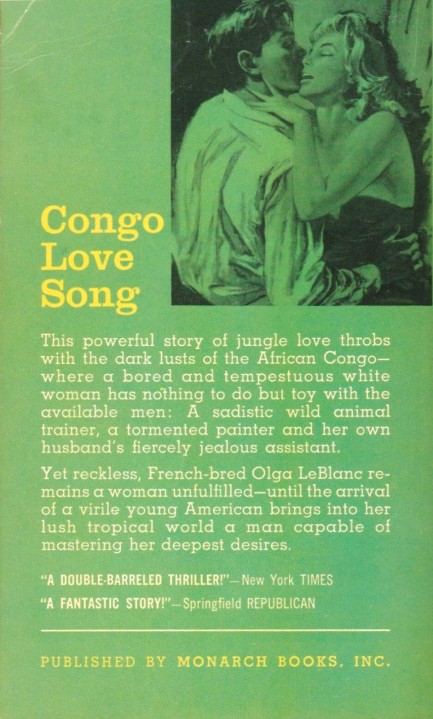
 Okay, I think we're ready. Formula for edible pomegranate flavored body oil, test seventeen, commencing now. 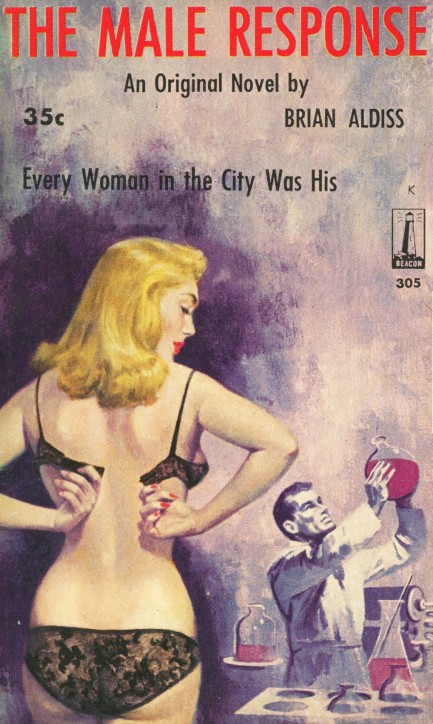
Brian Aldiss was better known as a sci-fi author, but his 1961 novel The Male Response deals with sexual mores and politics. On Aldiss's website he writes: “Only marginally science fiction, the story tells how the indecisive Soames Noyes is sent by his company with a computer to the newly free black state of Goya, in Africa, where he becomes entangled with women and witch-doctors. Reluctantly, Noyes faces all challenges and, following by public promiscuity, becomes President.” That certainly sounds fun, especially the promiscuity to president part. It obviously could only happen in sci-fi. The cover art here is by Robert Stanley.
 I got your soft jazz right here. 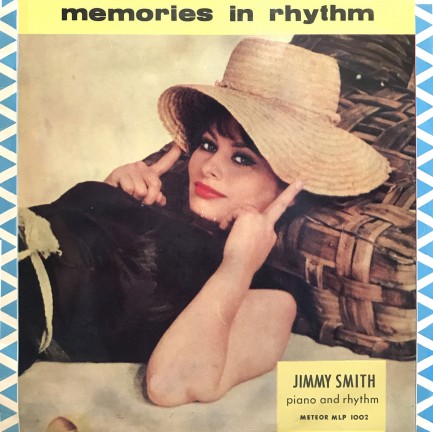
Is Sophia Loren flipping off the camera? Sure looks like it, but we'll give her a pass—in Italy a raised middle finger doesn't mean what it does in the U.S. In fact, though Italians have dozens of hand gestures, we don't think a raised middle finger means anything. In any case we love this image of Loren on the cover of Jimmy Smith's LP Memories in Rhythm. We saw this at lpcoverlover.com recently and gave it a much needed clean-up. You can see the original image here. If you're thinking of the jazz Jimmy Smith who performed on the Hammond B-3 electric organ, it probably isn't him. There were many Jimmy Smiths in music and we have no way of knowing which this one is. We do know the record was pressed in South Africa, if that helps. Didn't help us. But there you go.
 Singer elopes with girlfriend and everything falls apartheid. 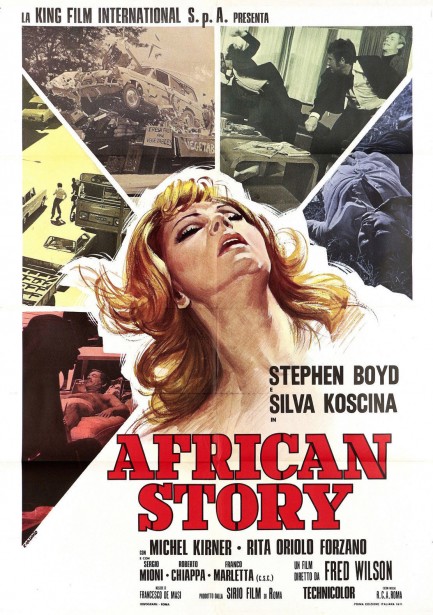
We'd never heard of African Story, aka The Manipulator, before seeing this Italian promo poster painted by Renato Casaro. We were hoping for another semi-comical romp in the vein of Black Emmanuelle or The African Deal (i.e. lily white visitors are magically driven to get freaky in the bush with locals), but this film goes in a different direction. A famous singer named Rex Maynard runs away to South Africa with a powerful music producer's daughter, prompting the producer to set up a fake kidnapping to scare the crooner and simultaneously generate publicity for his career. Somehow or other a group of actual kidnappers decide to put the bag on Rexie, and mayhem soon follows. Rex may be a soft jazz kind of singer, but he's hard rock with his fists. He even uses judo to whip ass on several of his assailants. Luckily one of them packs a gun or they'd all have ended up in intensive care. Rex is also slippery as an eel, with his escapability aided by the kidnappers' generally lax security.
We'd file this movie in the terrible-but-fun category, with Stephen Boyd, who played the rugged Messala in Bur Hur, here putting on his evil capitalist pants, beautiful Sylva Koscina playing the femme fatale, and Michael Kirner expending far more physical energy in the role of the pursued singer than you'd think possible for a guy with his body fat. African Story has virtually no Africans of the black variety in it, but then again this is the apartheid era we're talking about. Blacks need not apply—particularly for speaking roles (except for those two fisherman guys who you'll miss if you blink). In fact, you see very few blacks even in the backgrounds of shots. With sequences set in offices, hotels, nightclubs, pools, and at a *ahem* race track, their conspicuous absence reveals the reality of how all good things in South Africa were reserved for whites. And some bad things too, if you count the movie. African Story premiered today in 1971. 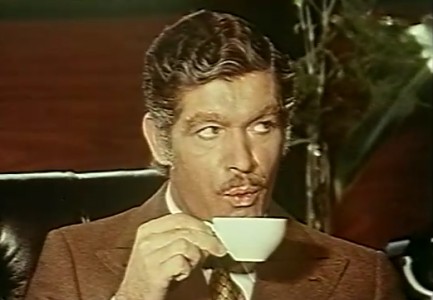 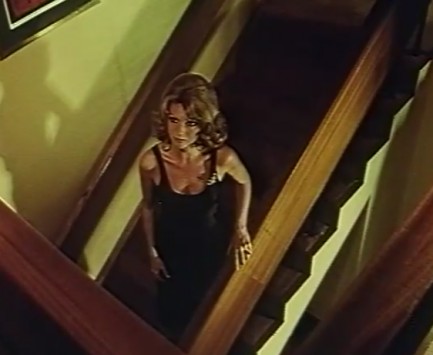 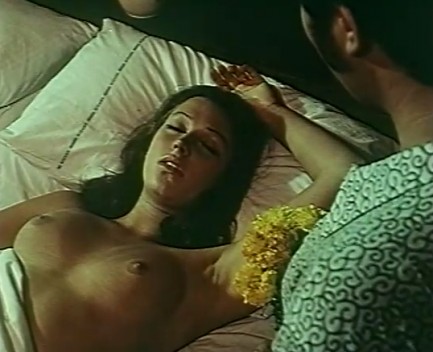 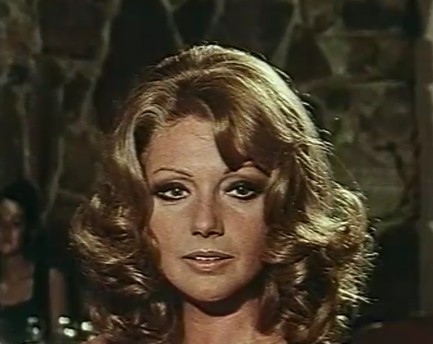 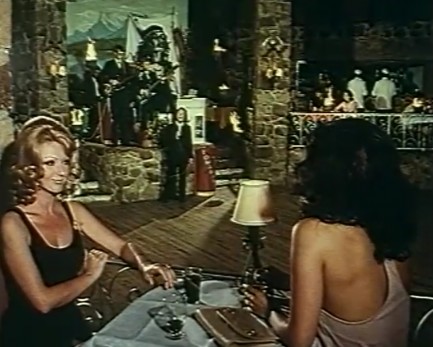 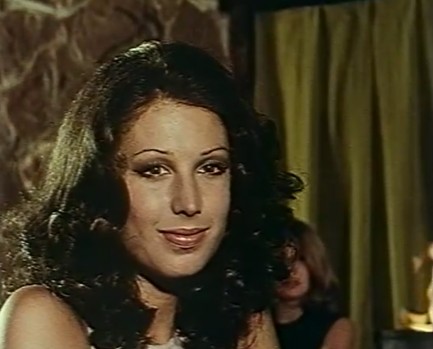  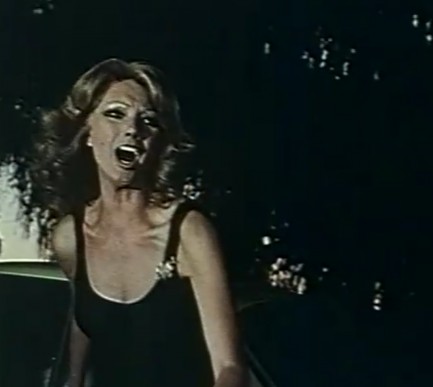 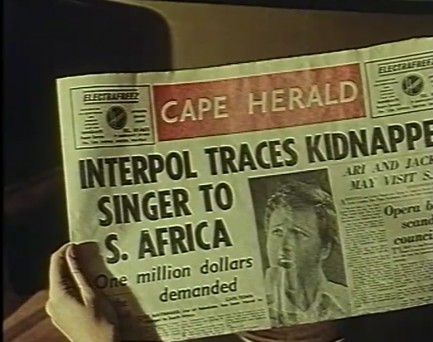
 British adventure magazine takes readers to the ends of the Earth. 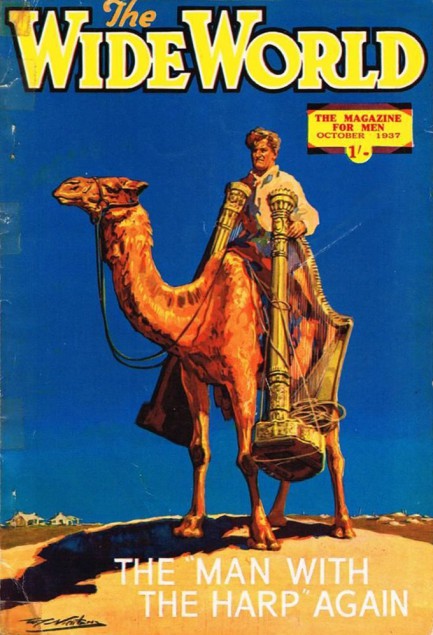
The British men’s adventure magazine The Wide World debuted in 1898 and lasted all the way until 1965. That’s not quite National Police Gazette or Argosy longevity, but it’s still very good. During that entire time, a span encompassing two global conflagrations and various economic fluctuations, it failed to print only four issues—including once when a German aerial bomb flattened its pre-press facility. The magazine’s founder was George Newnes, who also published The Strand Magazine, Tit-Bits and other titles. With The Wide World he hit upon an audacious marketing gimmick—he assured readers that every word in the magazine was true, and made “Truth Is Stranger than Fiction” the publication’s slogan. This claim was hot air, of course, but that idea—and the conceit that adventurers were a sort of global club that owed allegiance to one another—helped make the magazine a success among readers who considered themselves men of the world, or longed to be. A strong focus on exotic lands and inscrutable dark-skinned inhabitants resistant to the white man’s ordained incursions likewise played well with readers, as Britain’s colonial era evolved into a post-colonial one. That makes The Wide World a repository of some ugly attitudes, however the magazine also managed such feats as being the first publication to report the death of Butch Cassidy in Bolivia, and publishing stories by many literary notables. Above and below you see a collection of covers, nicely rendered in pulp style by various artists. 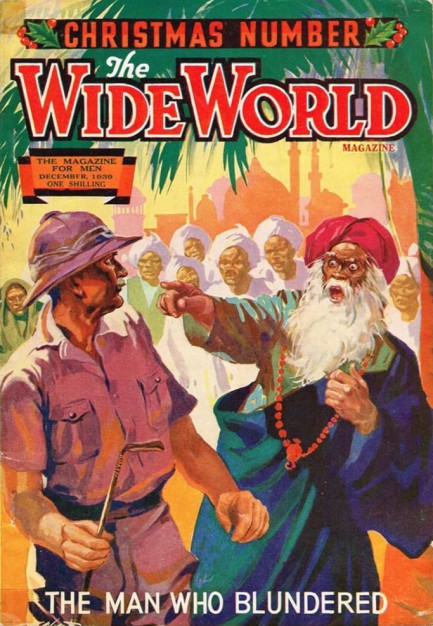 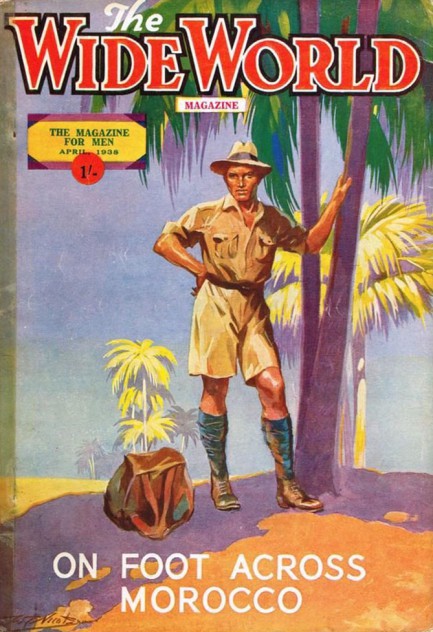 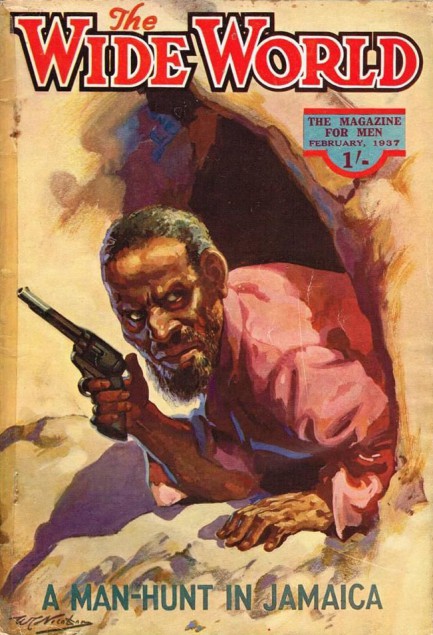 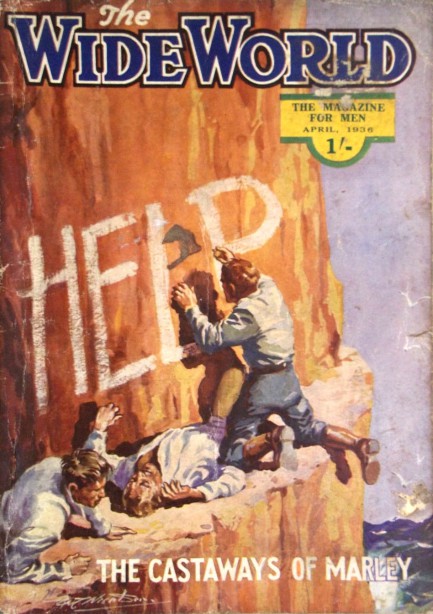 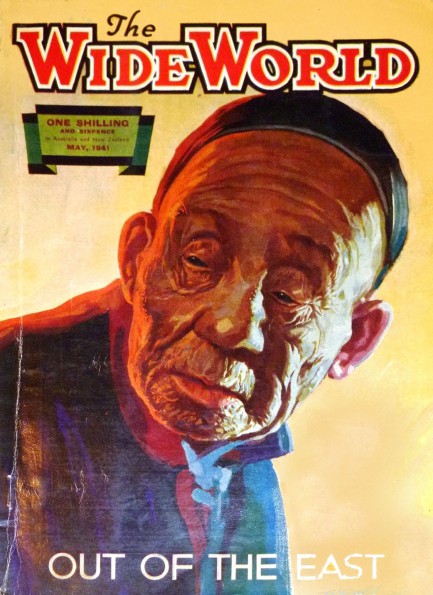 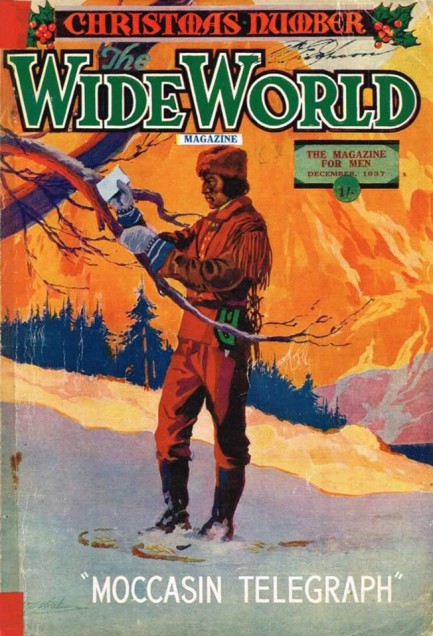  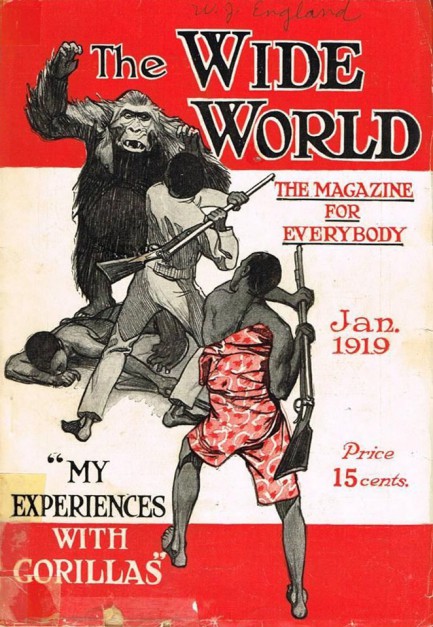 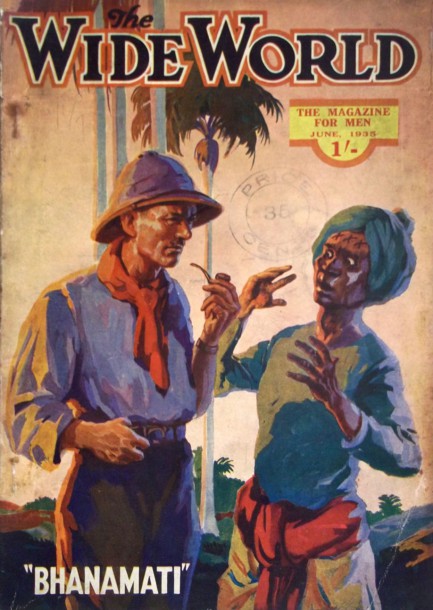 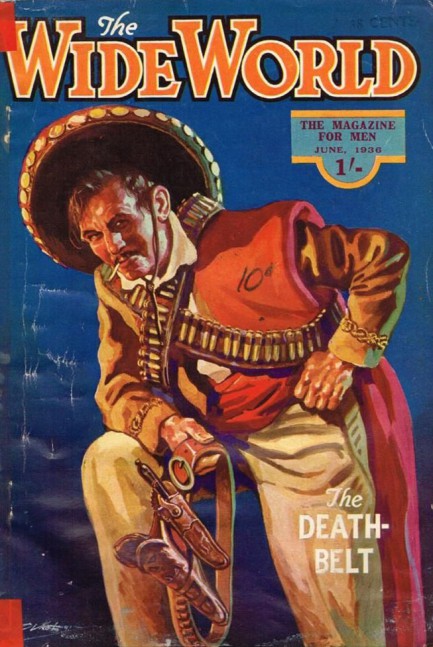 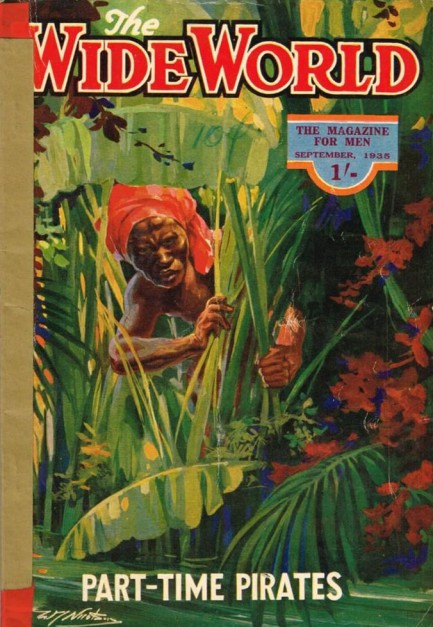 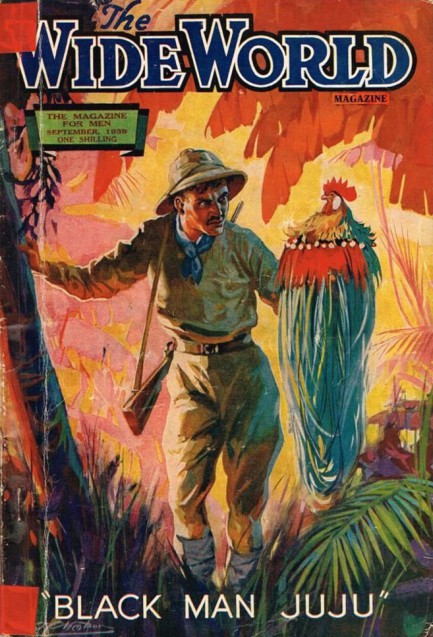 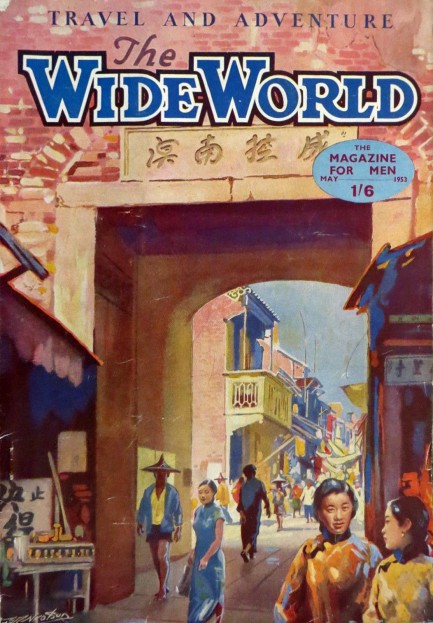 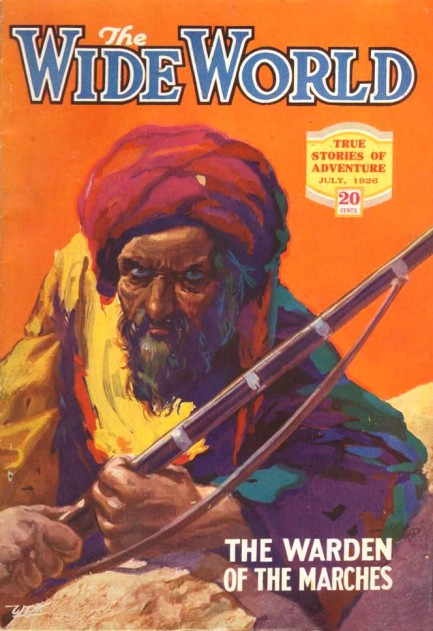
 The Male capacity for violence. 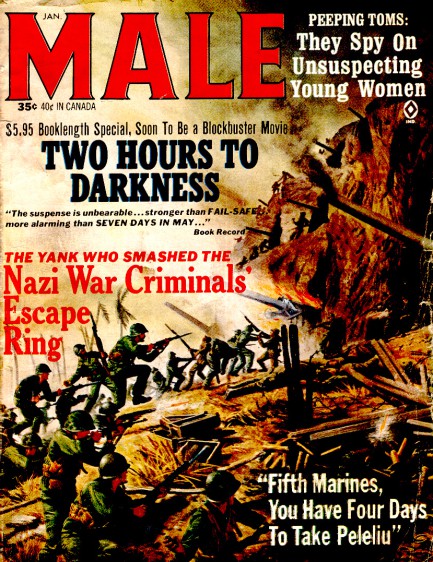
Above is a Mort Kunstler cover for Male painted for the January 1965 issue. Kunstler was famed for his war panoramas, as we’ve discussed before, and if you click his keywords below you’ll see several more martial covers from him that we’ve shared. Inside Male you also get art from Charles Copeland, Samson Pollen, and Gil Cohen. The model feature is Susan Radford, who is described as a starlet but who we’d never heard of. Turns out it wasn’t just us. We checked the usual databases and found no mention of Radford anywhere, so it seems Male editors were premature in dubbing her a major riser. Male focused on all kinds of violent adventures, but especially those dealing with warfare. This issue has four war stories dealing with the Soviet Union, China, and the Nazis, but the most notable entry is South African author Anthony Trew’s gripping Two Hours to Darkness, published here as booklength fiction. The tale is described in the contents as “the nightmarish spine-tingler that will be the movie blockbuster of 1965,” but it looks like Male was wide of the mark again, because no film based on the book was ever released. So Trew had to settle for selling a measly 3.5 million copies of the novel in sixteen languages, the hack. We have a dozen scans below.
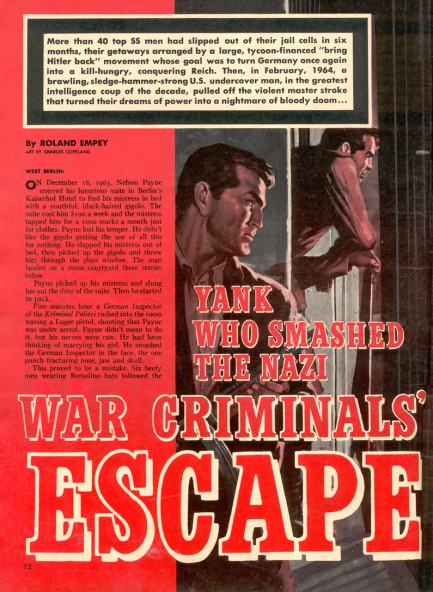  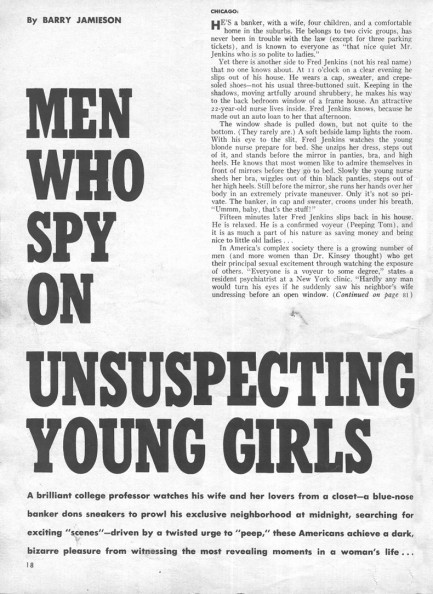 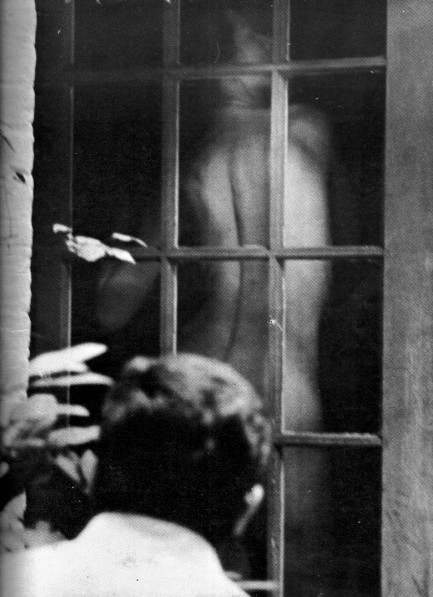 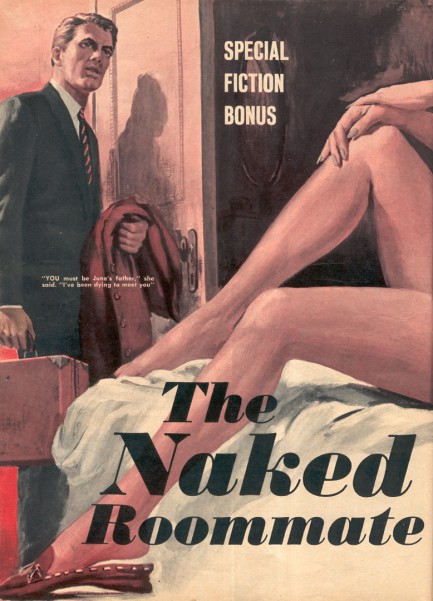 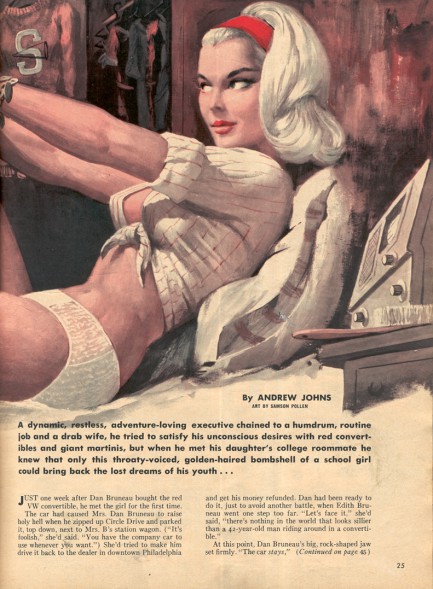 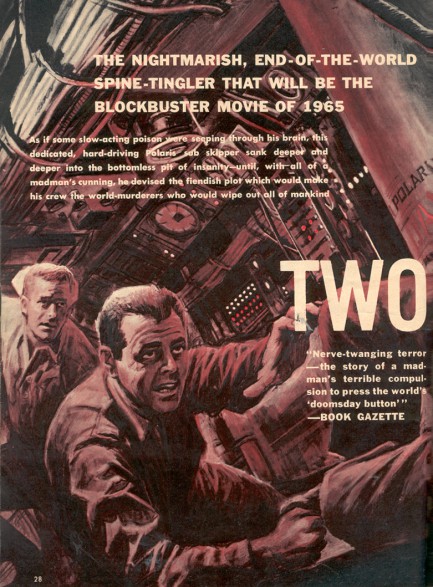 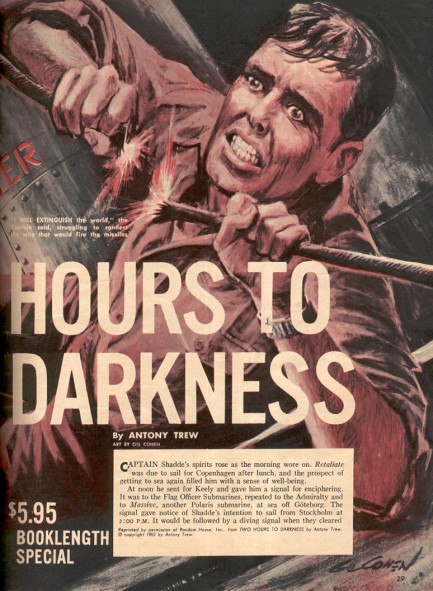 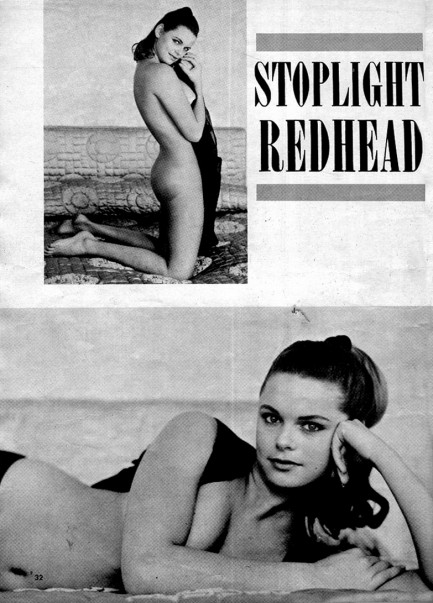 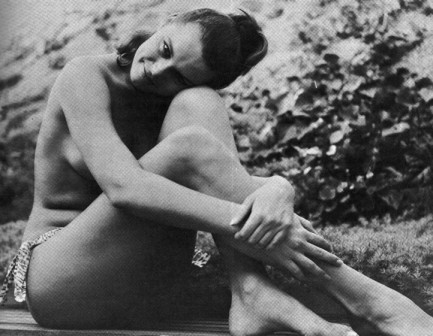
 It was a year to remember. 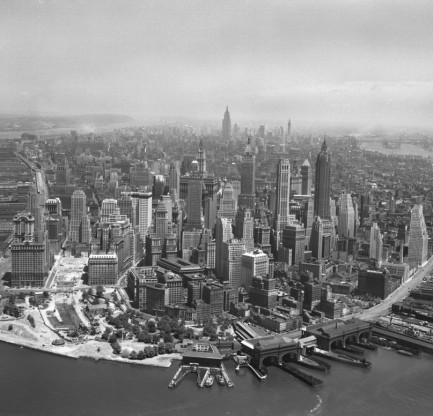
Above is a photo of Manhattan, New York City, in the year 1947, looking from Battery Park toward midtown. Here you see everything—the Staten Island Ferry Building at bottom, Wall Street to the right, the 59th Street Bridge crossing Welfare Island at upper right, and in the hazy distance, the Empire State Building—at that time arguably America’s most recognized symbol. In the aftermath of a war that had destroyed Europe’s and Japan’s industrial capacity, the U.S. was the unquestioned power on the planet, with massive economic might, a military that had taken up permanent residence in dozens of countries, and a growing stock of nuclear weapons. Two years later the Soviets would detonate their first nuclear bomb, shaking the American edifice to its foundation. Meanwhile, all around the world, the seeds of change were taking root. Below is a look at the world as it was in 1947. 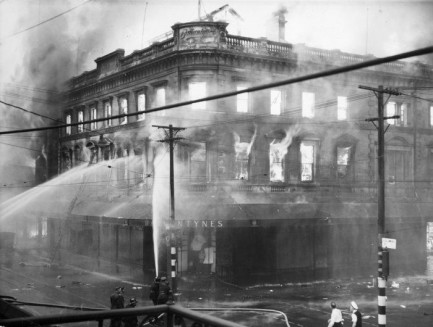 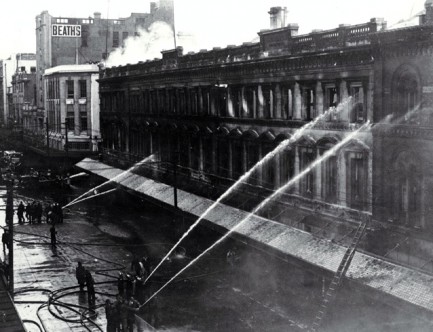
Firemen try to extinguish a blaze in Ballantyne’s Department Store in Christchurch, New Zealand. 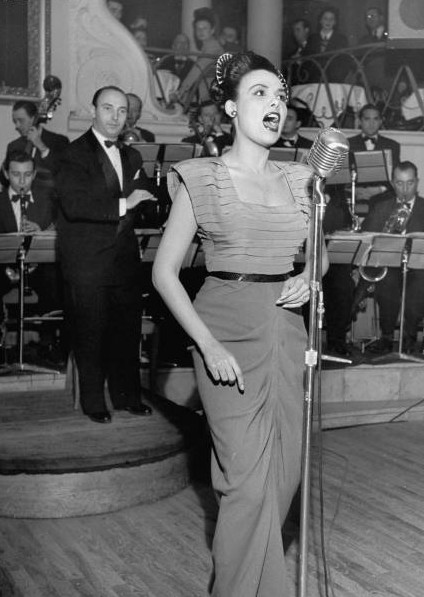
American singer Lena Horne performs in Paris. 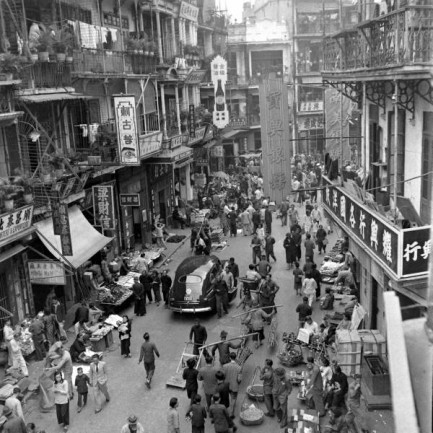 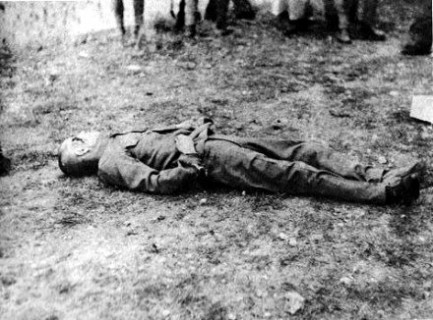
The hustle and bustle of Hong Kong, and the aftermath of the execution of Hisakazu Tanaka, who was the Japanese governor of occupied Hong Kong during World War II. 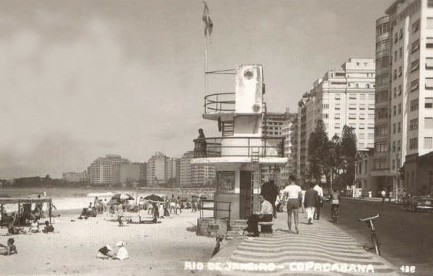 
Sunbathers enjoy Copacabana Beach in Rio de Janeiro, and a military procession rumbles along Rua Catumbi. 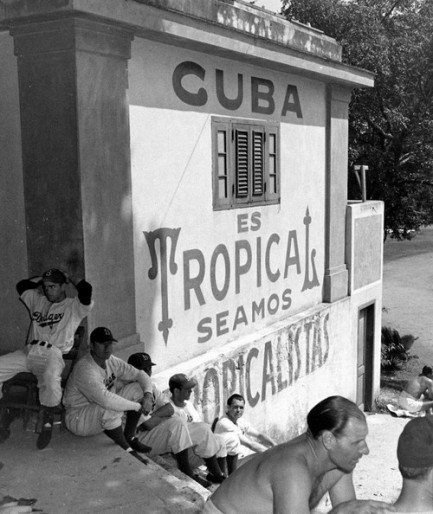 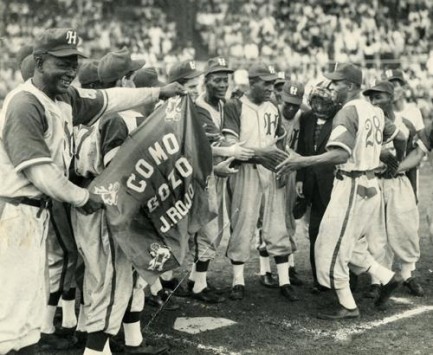
Assorted Brooklyn Dodgers and manager Leo Durocher (shirtless in the foreground) relax at Havana, Cuba’s Estadio La Tropical, where they were holding spring training that year. Second photo, Cuban players for the Habana Leones celebrate the first home run hit at Havana’s newly built Estadio Latinoamericano. 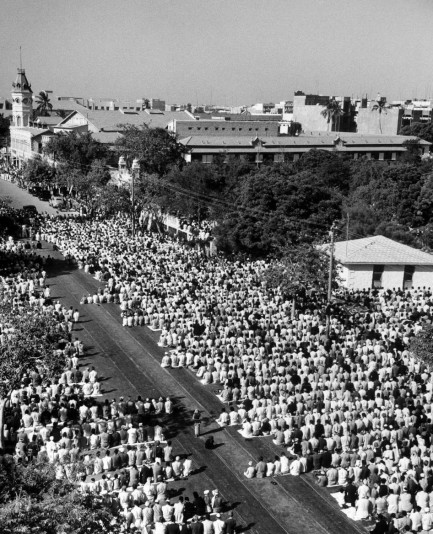
Thousands of Muslims kneel toward Mecca during prayer time in Karachi, Pakistan. 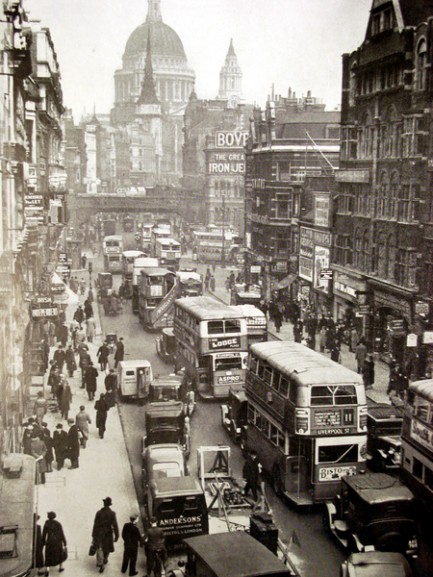
A snarl of traffic near St. Paul’s Cathedral in London. 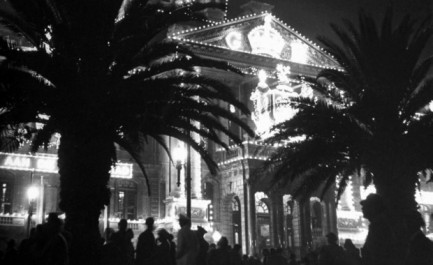 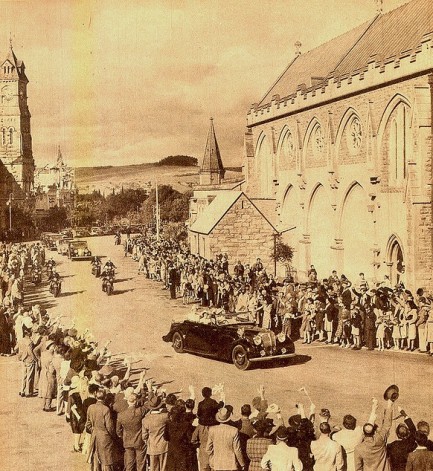
The city hall of Cape Town, South Africa is lit up to celebrate the visit of the British Royal Family. Second photo, during the same South African trip, the royals are welcomed to Grahamstown. 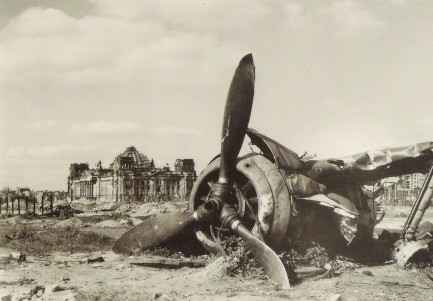 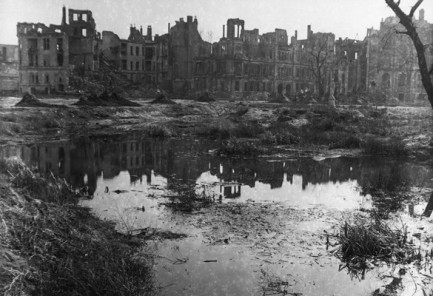
A wrecked fighter plane rusts in front of Berlin’s burned and abandoned parliament building, the Reichstag. Second photo, a shot of ruins in Berlin’s Tiergarten quarter, near Rousseau Island. 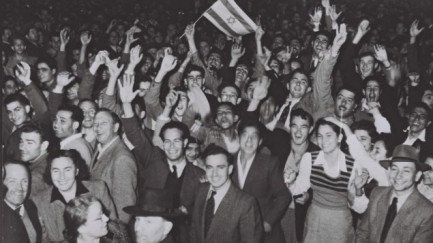
A crowd in Tel Aviv celebrates a United Nations vote in favor of partitioning Palestine. 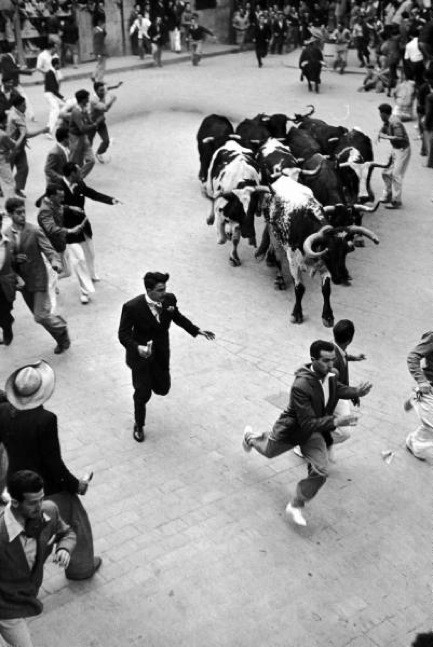
Men and bulls run through the streets of Pamplona, Spain during the yearly Festival of San Fermin. 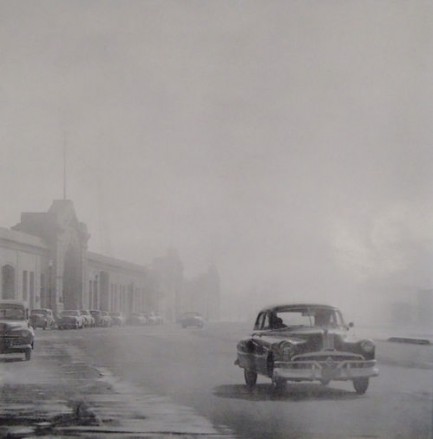 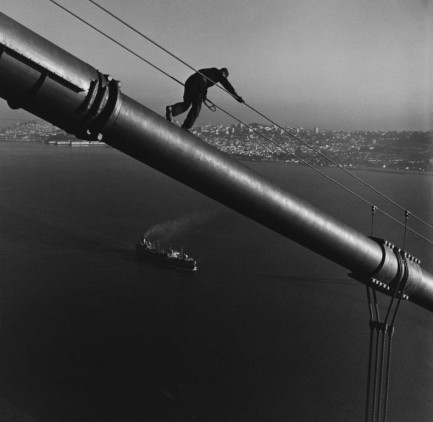
Fog rolls across the Embarcadero in San Francisco; a worker descends from a tower of the Golden Gate Bridge. 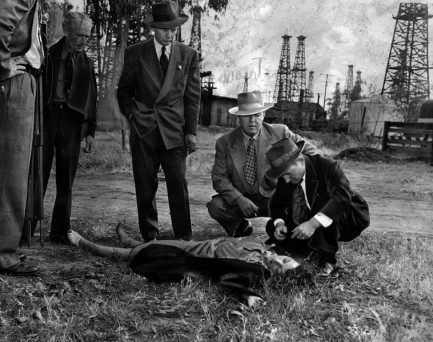 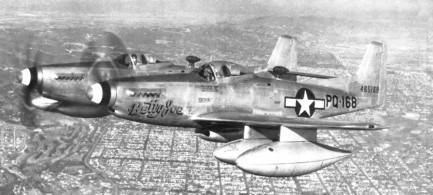
Detectives study the body of a woman found murdered in Long Beach, California. Two P-51 Mustang fighters fly above Los Angeles. 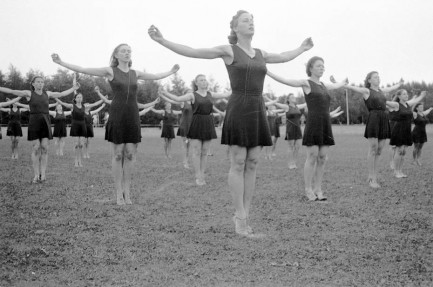
Danish women from Snoghøj Gymnastics School practice in Odense. 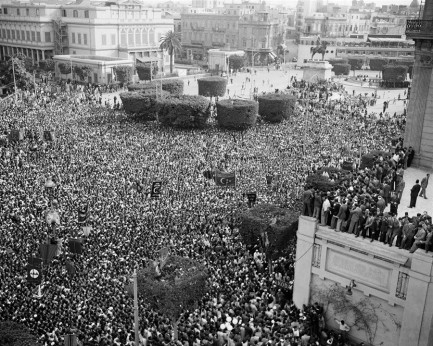
Tens of thousands of protesters in Cairo demonstrate against the United Nations vote in favor of partitioning Palestine. 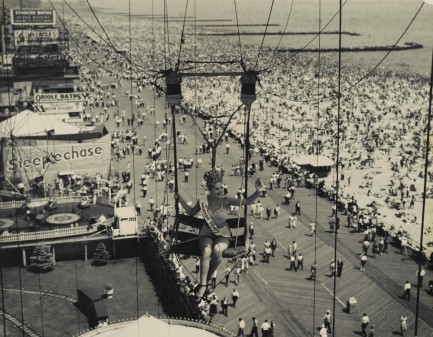
A beauty queen draped with a sash that reads “Modern 1947” is lifted high above the boardwalk in Coney Island, New York. 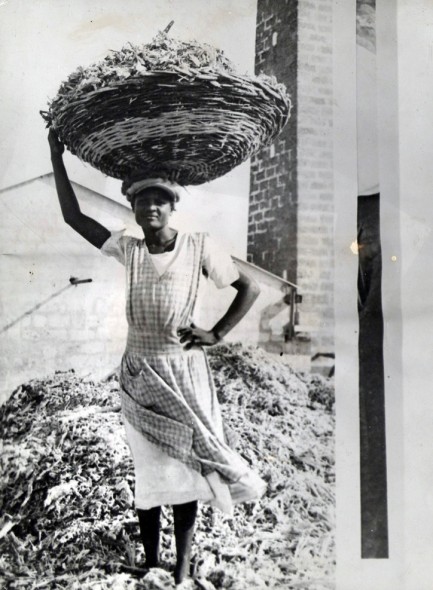
A woman in Barbados holds atop her head a basket filled with fibers meant for burning as fuel. 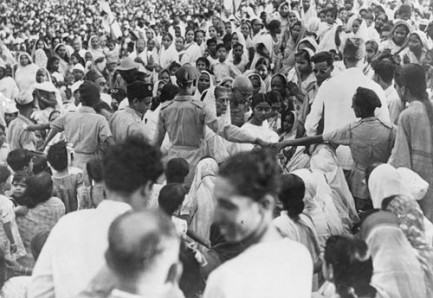
Mahatma Gandhi, his bald head barely visible at upper center, arrives through a large crowd for a prayer meeting on the Calcutta Maidan, India. 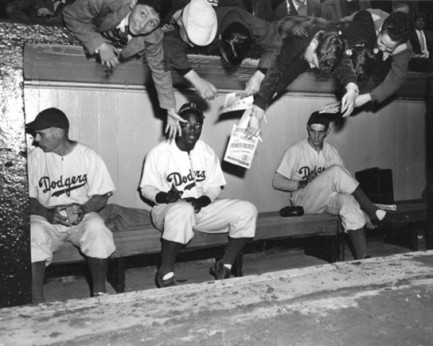
Major League Baseball player Jackie Robinson is hounded for autographs in the dugout during a Brooklyn Dodgers game.
 A quick glance over the shoulder. 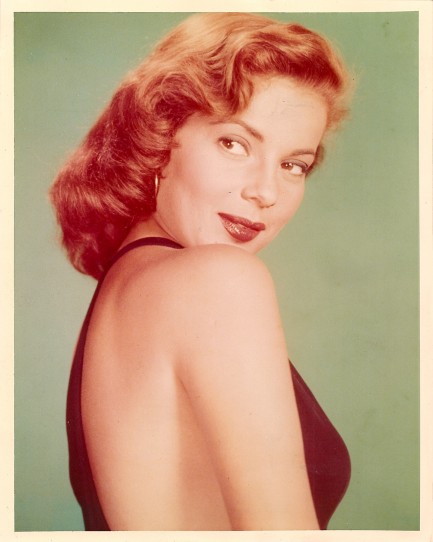
Our three week Stateside odyssey continues with the above find from the great Denver Book Fair. We uncovered this in a dusty back closet underneath a pile of old promotional posters. It’s a vintage photo of South African actress Hazel Brooks, never before seen online as far as we know, and we scored it for a pittance—three dollars. Can you believe that? No year on this, but she appears to be in her Body and Soul heyday, so we’re going to say 1947. More Stateside treasures upcoming.
 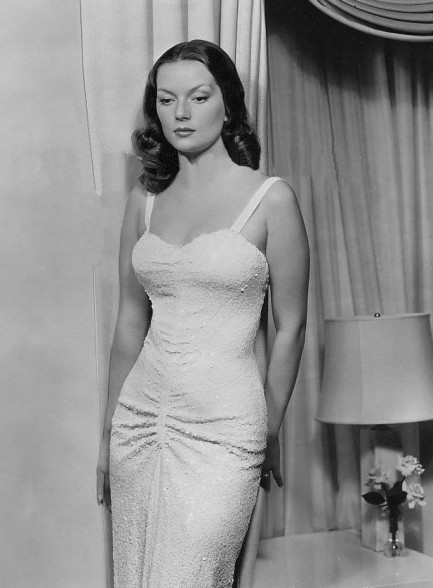
Hazel Brooks was born in Cape Town, South Africa but emigrated to the U.S. and appeared in her first Hollywood production at the age of eighteen. She became a true star four years later in the 1947 noir Body and Soul, which for most critics remains one of the best boxing movies ever made. You see her above circa 1946.

|
 |

The headlines that mattered yesteryear.
2003—Hope Dies
Film legend Bob Hope dies of pneumonia two months after celebrating his 100th birthday. 1945—Churchill Given the Sack
In spite of admiring Winston Churchill as a great wartime leader, Britons elect
Clement Attlee the nation's new prime minister in a sweeping victory for the Labour Party over the Conservatives. 1952—Evita Peron Dies
Eva Duarte de Peron, aka Evita, wife of the president of the Argentine Republic, dies from cancer at age 33. Evita had brought the working classes into a position of political power never witnessed before, but was hated by the nation's powerful military class. She is lain to rest in Milan, Italy in a secret grave under a nun's name, but is eventually returned to Argentina for reburial beside her husband in 1974. 1943—Mussolini Calls It Quits
Italian dictator Benito Mussolini steps down as head of the armed forces and the government. It soon becomes clear that Il Duce did not relinquish power voluntarily, but was forced to resign after former Fascist colleagues turned against him. He is later installed by Germany as leader of the Italian Social Republic in the north of the country, but is killed by partisans in 1945.
|

|
|

It's easy. We have an uploader that makes it a snap. Use it to submit your art, text, header, and subhead. Your post can be funny, serious, or anything in between, as long as it's vintage pulp. You'll get a byline and experience the fleeting pride of free authorship. We'll edit your post for typos, but the rest is up to you. Click here to give us your best shot.

|
|

















































































































